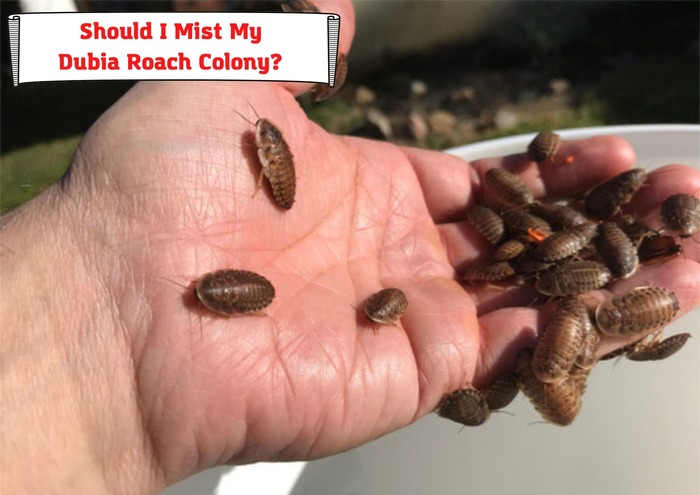Reptile pets like turtles, geckos, and lizards have many advantages over fur animals. Reptiles are quiet and require no training. They have low maintenance needs and rarely damage your property. However, the most relevant fact to our discussion is that they do not shed fur.
A reptile pet is a great alternative if you or a loved one in your home is allergic to fur pets like cats and dogs. If you are thinking of a turtle as a pet, you are in the right place. In this article, we will talk about allergies, diseases, and care tips for turtles.

Can You Be Allergic To Turtles?
About 10-20% of the world’s population is allergic to cats and dogs. In America, about 33% of people with allergies are also allergic to cats and dogs. It is normal to worry about turtle allergies if you fit in the percentage of people living with allergies.
The good news is that turtle and tortoise allergies are rare. However, you may react to their proteins when caring for your pets. In addition, you may develop allergies to substances in the turtle’s habitat, such as substrate, mold, and weeds or plants.
You may not suffer any allergies with a turtle if you eliminate potential causes from its habitat. However, turtles carry disease-causing agents that you need to know before buying or adopting a reptile pet. Let us talk about potential diseases and prevention measures.
Zoonotic Diseases Associated with Turtles
The common way through which you can acquire a disease from a turtle pet is when handling its aquarium water or fecal matter. You may be exposed to disease-causing microorganisms such as protozoa or bacteria in the water or feces.
Microorganisms are opportunistic, meaning that they will only compromise your immunity if you have a pre-existing condition. Hence, it is advisable to avoid handling and caring for your turtle when sick or under medication.
Here are the diseases you may contract from turtles and tortoises.
1) Salmonellosis
The disease comes from bacteria called Salmonella. It is among the most common diseases that animal handlers and pet lovers suffer. Birds and reptiles carry Salmonella bacteria and transfer it to humans.
Food safety is important when handling reptiles and birds. Most people develop Salmonellosis after eating food or drinking water contaminated with salmonella bacteria. The disease is critical for people with compromised immunity and children.
Take the safety precautions discussed later in this guide seriously if you or a loved one has a poor immune system. Some of the symptoms to look out for are watery and sometimes bloody diarrhea, nausea, abdominal cramps, and vomiting.
You may also experience chills. The symptoms are worse when the bacteria get to the central nervous system. In this case, worse conditions develop, including encephalitis and meningitis. Hence, you need immediate medical attention when the initial symptoms appear.
It is important to note the high risk of Salmonellosis associated with tiny turtles. You may be attracted to tiny turtles because they look easy to handle, especially for your kids. Tiny turtles are cute but deadly.
According to the Center for Disease Control and Prevention (CDC), tiny turtles cause most Salmonellosis outbreaks. Consequently, CDC banned the sale of tiny turtles in 1975. If you are living in the US, buying or selling a tiny turtle is illegal.
You will still find them on sale in pet shops and markets despite the ban. However, you put your children at high risk because they are more likely to carry pets than adults. While all turtles can carry Salmonella bacteria, you are safer with a turtle whose shell is at least 4 inches.
2) Campylobacteriosis
Turtles can carry Campylobacter bacteria, which causes Campylobacteriosis. You can contract the disease when handling infected fecal material or eating contaminated food. You will also catch the disease through contact with an infected animal, which is, in this case, your turtle.
The most common symptom of Campylobacteriosis is diarrhea. You may also notice blood in the loose stool. Other symptoms are abdominal pain, cramps, vomiting, nausea, and fever within the first 2-3 days of infection.
Bacterial infections are manageable with antibiotics. However, the same disease can become life-threatening if it spreads to the bloodstream. Be cautious when choosing pets and handling food if you have persons with a weakened or compromised immune system around you.
Campylobacteriosis often clears on its own. However, you may get antibiotics if the symptoms persist. If a person in your home has diarrhea, isolate them for a while until it stops.
How to Handle Turtles Safely
We have established that it is unlikely that you or a loved one will be allergic to a turtle. However, you need to protect yourself from the potential zoonotic infections that the pet may bring. You also need to check its habitat for hazards.
Here are useful tips to protect your family from infections while handling turtles:
1. Get an adult turtle
Resist the temptation to get a tiny turtle, even if you intend to follow all safety precautions. You will only put your loved ones at risk with a tiny turtle. CDC recommends turtles with 4-inch shells. Some pet stores break the law and convince pet lovers to buy tiny turtles.
Your kids may also persuade you to get a turtle pet they can handle. Explain the dangers if they can understand and get an alternative pet for them.
2. Wear gloves when handling the turtle
You will need to clean the turtle’s tank or habitat and remove any feces in the water. Wear gloves to minimize the risk of contracting bacteria or any other disease-causing microorganism. It is also advisable to keep the gloves on when touching the turtle.
Wearing gloves is mandatory if you have cuts or bruises on your hands. Bacteria can get into your system easily through an open wound. You may also get a fresh bruise when cleaning the habitat, hence the need to wear well-fitting gloves.
3. Wash your hands thoroughly
Washing hands with soap and water should be part of your family culture, as long as you have a turtle or any other pet around. Teach your kids to wash their hands thoroughly after touching the pet, visiting the toilet, and before eating.
Wash your hands thoroughly after cleaning the turtle’s tank, water, or supplies, even if you were wearing protective gloves. In addition, wash your hands before and after handling raw foods. Many bacterial infections are preventable with proper hygiene
4. Keep the pet outdoors if possible
Keeping the turtle outdoors may be a stretch for a pet lover, but it will simplify your hygiene routine. You may not allow the turtle to roam in your backyard, but you can build a spacious habitat outside. In addition, the materials in the habitat can cause allergies when placed indoors.
Consider an outdoor habitat if you are allergic to mold or dampness. Think about the habitat before you get the turtle. If you already have the pet and experiencing allergies or other symptoms, move the habitat to check if the symptoms will disappear.
5. Clean the habitat and supplies outdoors
If you cannot have the tank outside for any reason, avoid cleaning the tank or turtle supplies in the house. Do not use the kitchen sink or any other washing area inside the house. You risk spreading bacteria into the home if the turtle is infected.
6. Seek medical attention immediately when infected
Prompt medical attention prevents worse symptoms. Seek help immediately if you or your loved one develops any symptoms of a bacterial infection or allergies. As mentioned earlier, bacterial infections are life-threatening when they spread to the bloodstream.
You also need immediate medical attention if you hurt yourself when handling a turtle or cleaning its supplies and habitat. Mention to the doctor that you were caring for a turtle for an accurate diagnosis.
7. Avoid snuggling the turtle
Many of us want pets that we can hold and snuggle. You can do that with a dog or cat but not a turtle. Bacteria may spread to your system through the mouth if you kiss the turtle or its shell. In addition, snuggling increases your chances of transferring bacteria with your hands.
8. Consider your family’s needs
It is understandable that you want a turtle as a pet. You may be allergic to fur animals or just love reptile pets. However, you need to think beyond your preferences and consider your family’s needs and safety.
You may have read all the safety precautions. However, it is difficult to convince every family member to follow the rules strictly. Consider a different pet if you have children below five years in your home or adults above 65 years.
You will also risk the lives of loved ones with weakened immune systems if you bring a turtle. The persons may not be living with you, but it is worth your consideration if they visit you often.
Conclusion
Allergic reactions to turtles are rare. However, turtles can cause bacterial diseases, including Salmonellosis and Campylobacteriosis. Tiny turtles cause most zoonotic diseases, especially Salmonellosis. If you must, get a turtle whose shell is at least 4 inches.
Proper hygiene after handling a turtle and its habitat is necessary to protect your family from bacterial infections. In addition, you need to consider an alternative pet if you have children below five years, persons with weakened immunity, or adults above 65 years.
- Pacman Frog Looks Deflated – What’s Wrong and What to Do? - August 7, 2023
- How to Put Snake Back in Cage after Feeding? Important Concerns - July 31, 2023
- Repta Boost: Instruction, Considerations, Ways to Use - July 24, 2023



